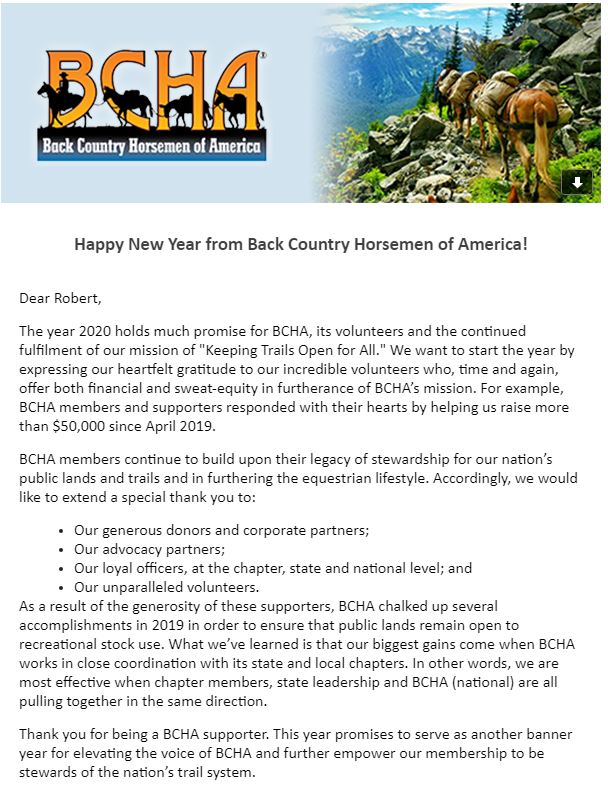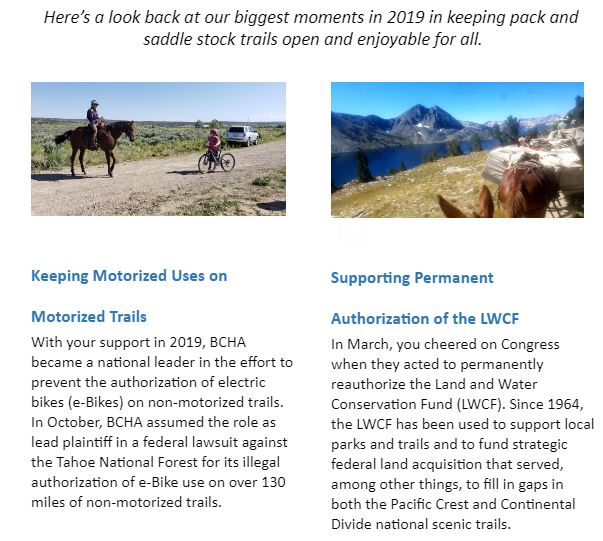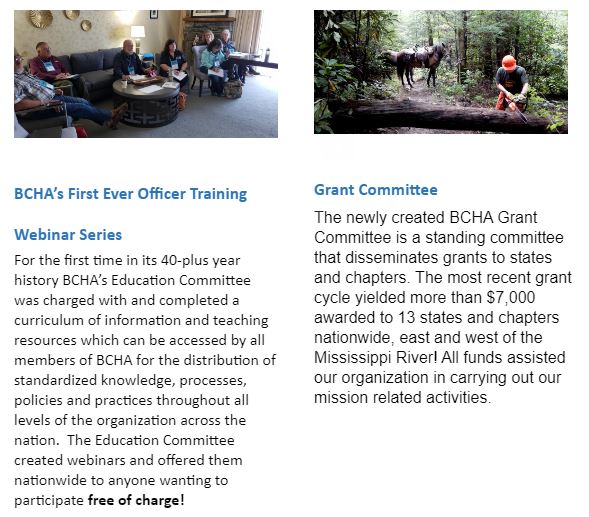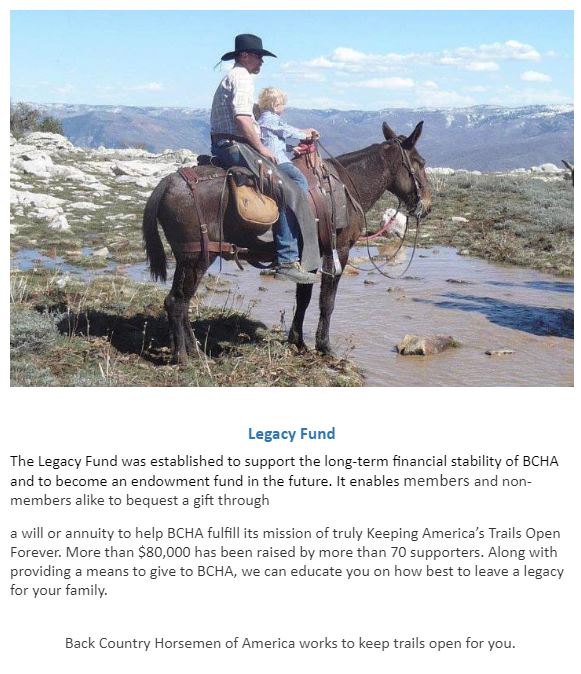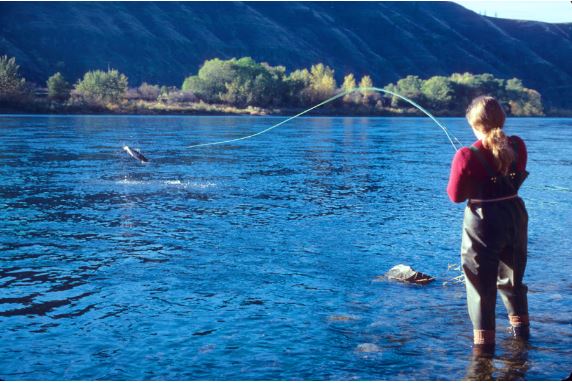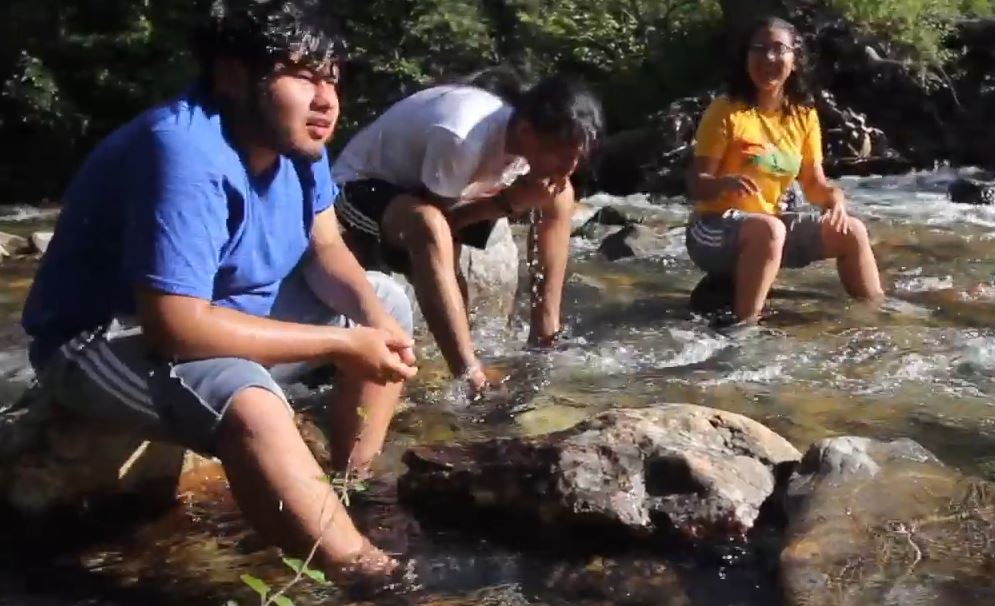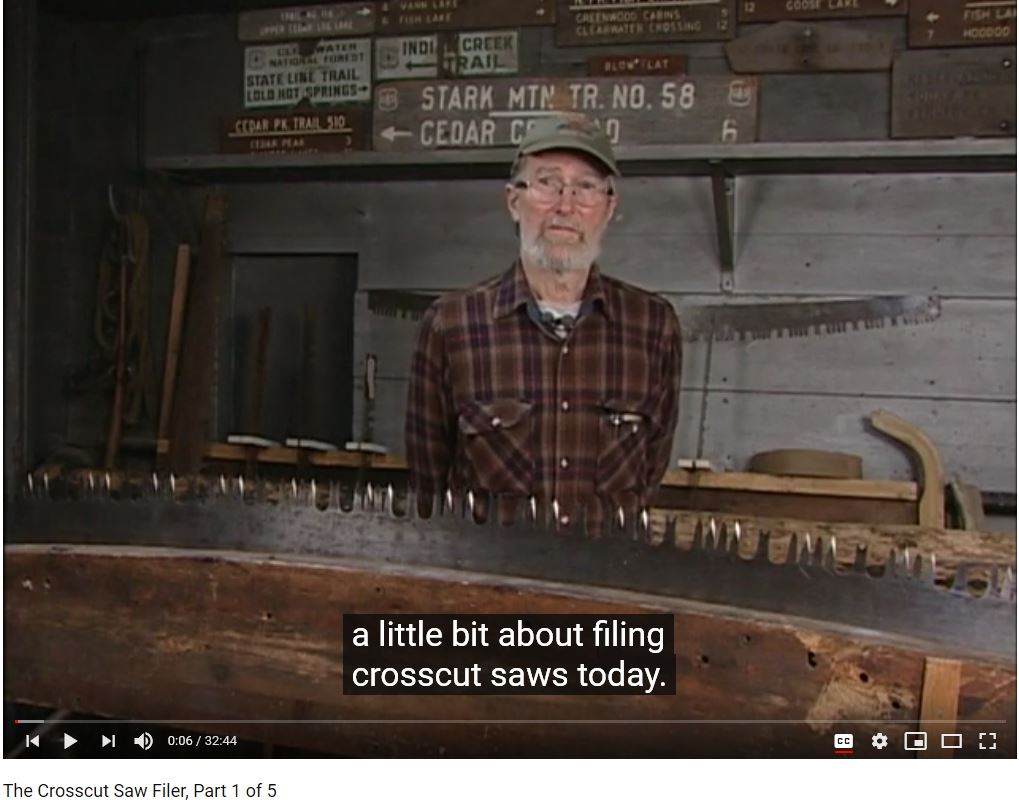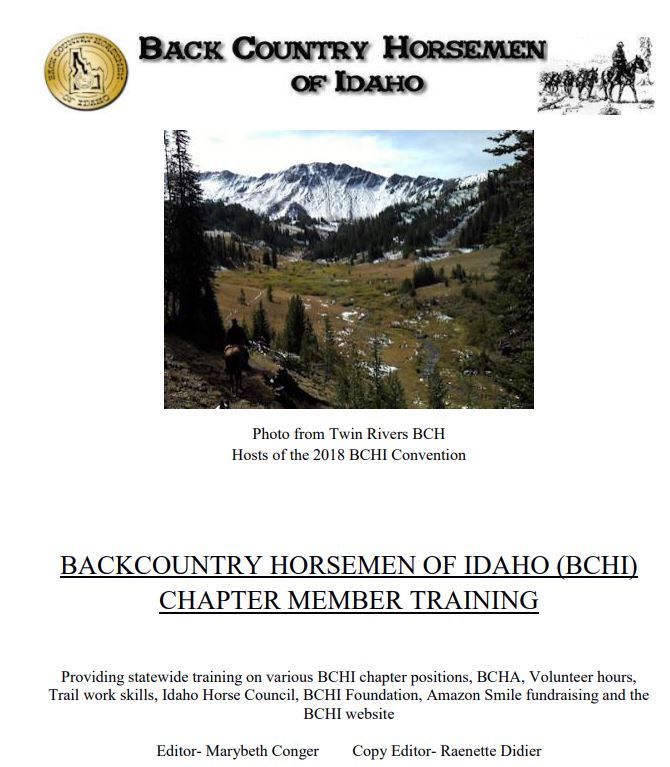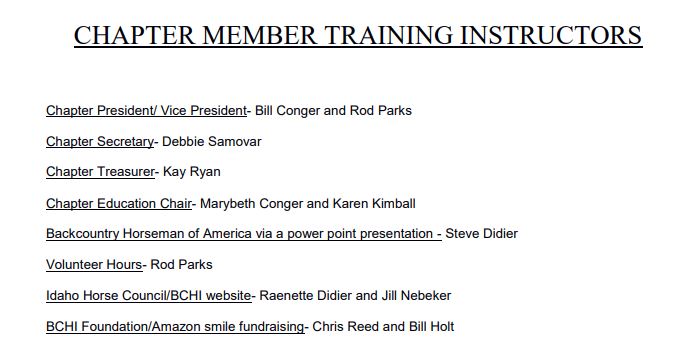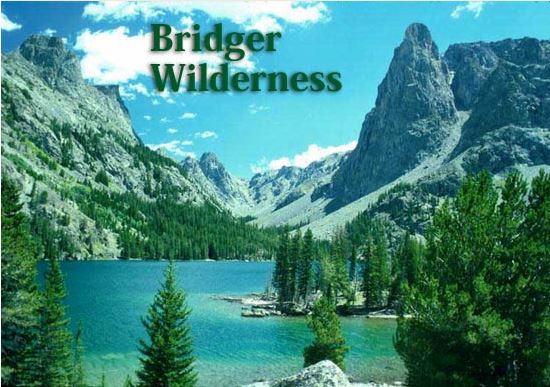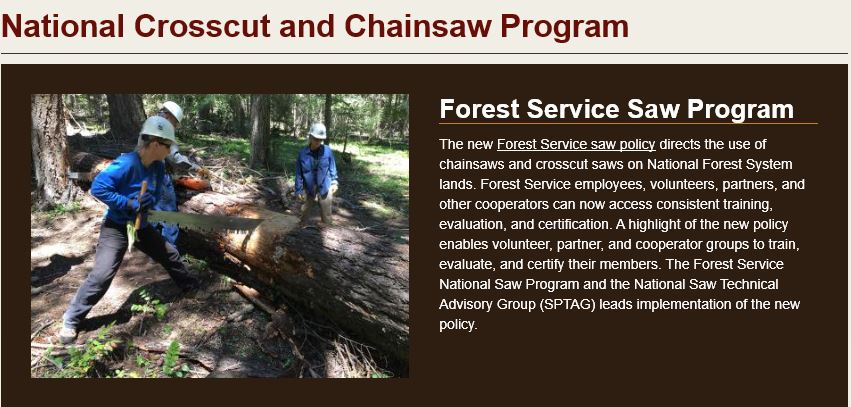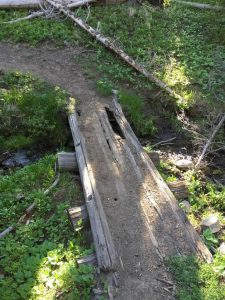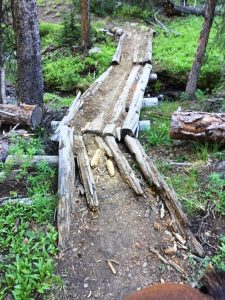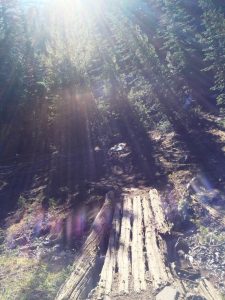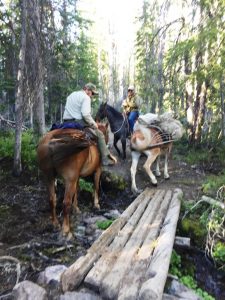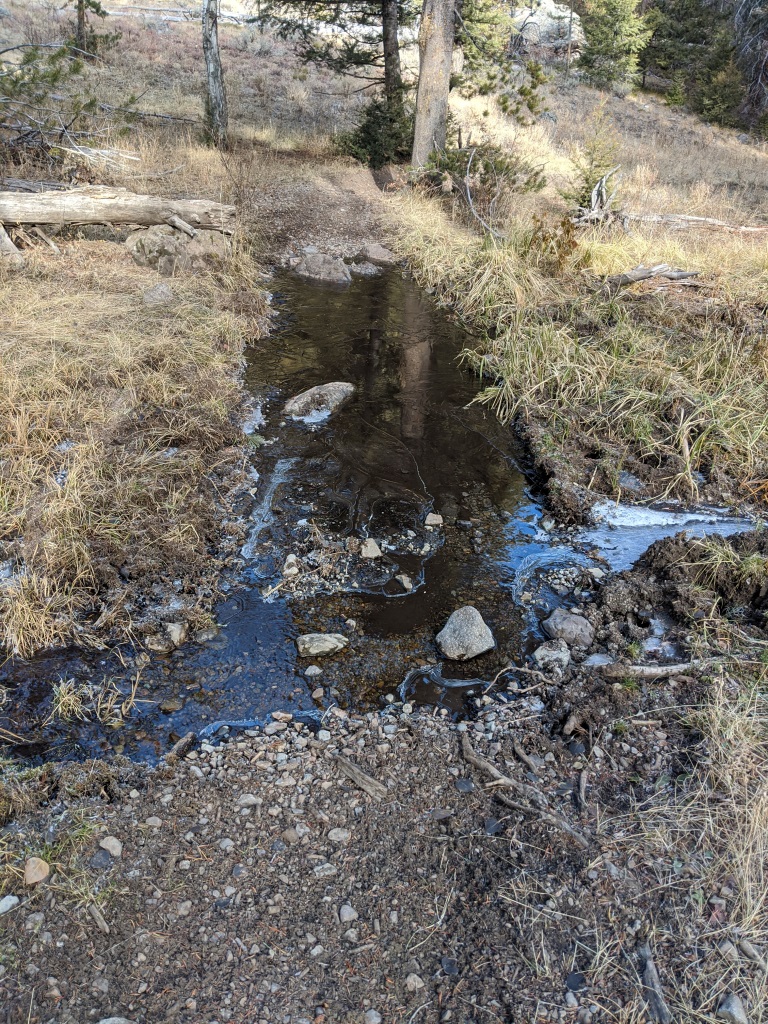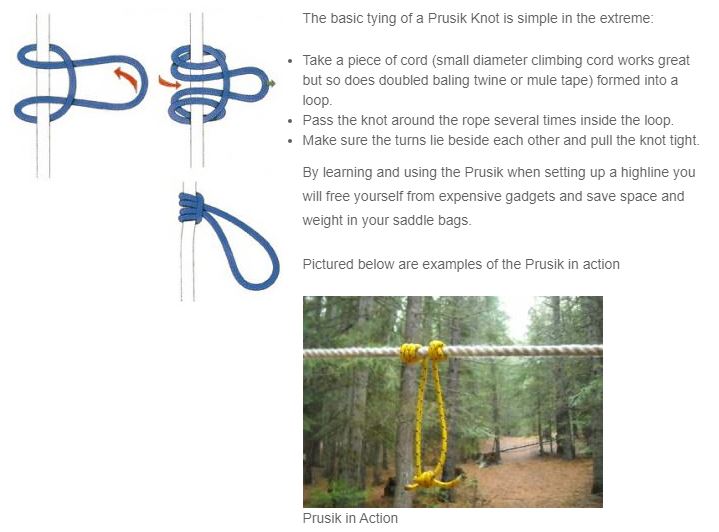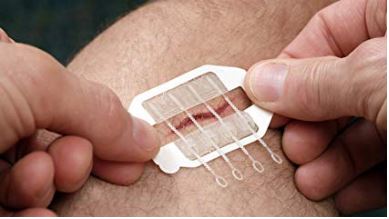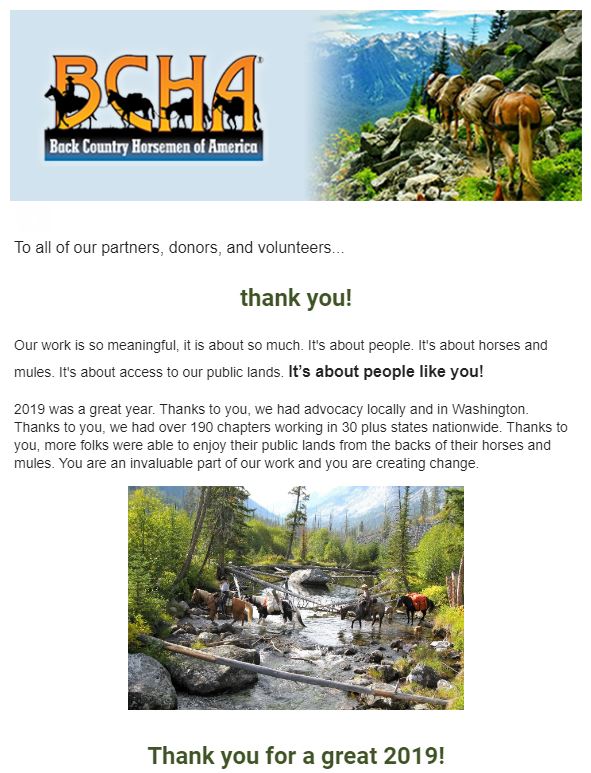If you’ve been looking for an opportunity to speak up for salmon, steelhead, and Idaho’s river communities, here’s an excellent opportunity!
This Friday, January 17th, the Governor’s Salmon Workgroup will hold a public comment period from 5-7pm in the Lincoln Auditorium at the State House in Boise: 700 W Jefferson St. Anyone is welcome to sit in on the meeting or sign up to give public testimony, and each individual will be allotted 3 minutes. We hope to see you there!
On Saturday, the group will meet at the University of Idaho Boise Water Center to conduct a group meeting amongst Workgroup members. The public is also invited to sit in on this meeting.
As a reminder, IWF is a member of the Workgroup and sits alongside a diverse group of stakeholders that represent varying interests throughout Idaho and the region.
You can find the full meeting agenda for both days here.
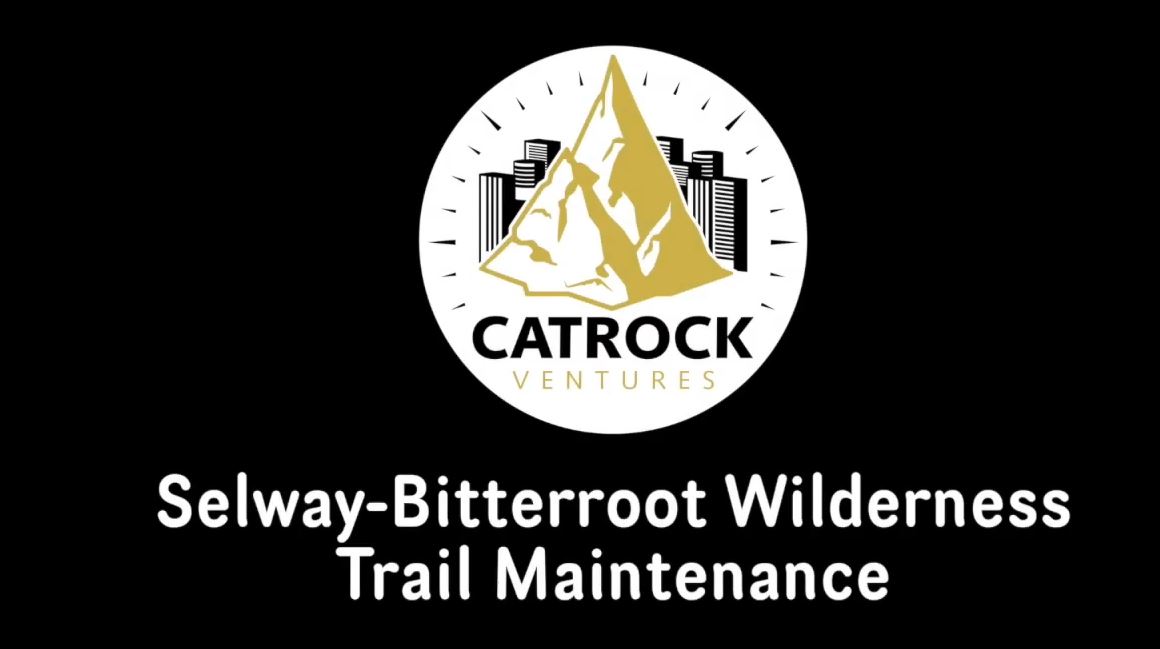 This past summer… a group of high school students traveled from the Bronx, NY (a borough of New York City) to the back country of Idaho.
This past summer… a group of high school students traveled from the Bronx, NY (a borough of New York City) to the back country of Idaho.
Can you imagine?
They were enrolled in a program called Catrock Ventures… and worked with the SBFC to clear 5 miles of trail, experience life in the wilderness, and learn Wilderness skills.
Click here to view a short video of their amazing journey!!
Catrock Venture’s mission is to reach, inspire, and empower low-income youth to become socially responsible change-makers.
Many of these kids have never been away from their neighborhoods in the Bronx… much less the state of New York.
The opportunity to experience some of the most wild places in America is truly a life-changing experience for them.
And we support their efforts…
We need our youth… all of them… to become stewards of our wild places. And help preserve wilderness areas for everyone to enjoy today… and far into the future.
I hope you enjoy the video.
This is Part 1 of 5 of the Crosscut Saw Filer. Warren Miller, author of the Crosscut Saw Manual, learned to file crosscut saws from Martin Winters, accomplished filer from the days when the crosscut saw reigned. Warren began filing saws in the 1970s and continues to pass on his knowledge at saw filing workshops today. USDA Forest Service, Missoula Technology and Development Center, 1123-2D03-MTDC.
Traditional Tools & Skills
Information provided in this toolbox is intended to support the use of Traditional Tools and Skills for administrative activities in wilderness. A process for determining the minimum requirement and minimum tool is described and information and training resources are provided. The toolbox features sections on common traditional tools (i.e. saws, axes, rigging, grip hoists, rock tools, etc.), travel methods (i.e. livestock, watercraft, sled dogs, etc.), and project examples (i.e. trails, weeds, etc.). To suggest new materials for inclusion, email Lisa Ronald at lisa@wilderness.net. Date of last update: 11/26/2018.
Introduction
Overview
The use of traditional tools and skills (TTS) for necessary administrative activities in wilderness is a basic principle of wilderness stewardship. The basis for this principle is found in the Wilderness Act itself and implemented through agency regulations and policy. The use of TTS or non-motorized tools and methods is directly related to both the purpose and the definition of wilderness as described in the Wilderness Act and agency policy.
Information provided in this toolbox is intended to support the use of TTS for administrative activities in wilderness. The use of TTS is mandated by both the Wilderness Act and agency policy and exceptions are made only when the use of motorized equipment or other prohibited uses are screened through narrow criteria. Comfort, convenience, economic efficiency, and commercial value are not standards of management in wilderness or criteria that are used to screen proposals to use something other than TTS. Assumptions about the use of TTS are often not true and can be overcome. Additional information and a process for making decisions related to use of TTS skills is contained in the Minimum Requirements Decision Guide.
Training and Information Contacts
- FS Regional Trainers and Information Contacts
- Ninemile Wildlands Training Center
- Missoula Technology Development Center Publications
- Student Conservation Association Traditional Skills Training
- Lightly on the Land-SCA Trails Manual
- Volunteer and Partner Training sources
- FS Regional Blasters Contact List
- BWCAW Trail and Campsite Maintenance Guide


You can help fight back against invasive species in America’s wild places by downloading the FREE Wild Spotter Mobile App on your smartphone or other mobile device. You’ll learn how to identify, map, and prevent the spread of these invaders in order to protect our rivers, mountains, forests, and all wild places for future generations. Learn more by watching the Wild Spotter Introduction Video.
Volunteers are a vital part of the Wild Spotter campaign! To become a volunteer, register either online or download the FREE Wild Spotter Mobile App on your smartphone or other mobile device. Once registered, reach out to your nearest National Forest or Grassland to discover how you can volunteer to help support and protect these beautiful places from invasive species. Then, just get outside and enjoy America’s wild places while keeping an eye out for those harmful invaders! https://wildspotter.org/
The 428,169-acre Bridger Wilderness is located along the Continental Divide on the west slope of the Wind River Range in Wyoming. It was designated a Primitive Area under Department of Agriculture Regulations in 1931, and later made part of the National Wilderness Preservation System with passage of the Wilderness Act in 1964. In 1984, its original 392,169 acres were increased by 36,000 acres when the Wyoming Wilderness Act was signed into law. The Bridger Wilderness is administered by the Pinedale Ranger District of the Bridger-Teton National Forest.
Topography
The intricately faulted Wind River Range is dominated by an igneous and metamorphic core. Enormous compressional forces in the earth thrust the block of granite into the air. The glaciation and erosion that followed carved the range, leaving 13,804 foot Gannet Peak the highest mountain in the Wilderness and in Wyoming.
Glacial action left cirques, kettles, U-shaped valleys, hanging troughs, 1,300 lakes, and left “erratics”, boulders strewn about the lowlands. The sedimentary rocks that once overlay the granitic core of the range have been stripped from the mountains by erosion. Remnants of the sedimentary rocks remain near Green River Lakes.
The Wind River Mountain Range has seven of the ten largest glaciers remaining in the contiguous United States. The Green River originates in the Bridger Wilderness. The Green River joins the Colorado after 1,500 miles and empties into the Gulf of California. The Green River drains most of the west side of the Wind River Range. The Sweetwater River drains the southern end of the range and flows into the Platte River and ultimately the Gulf of Mexico.
Access
US Highway 191, the major highway between Rock Springs and Jackson, Wyoming, lies west of the Wind River Range. Trailheads are reached via roads which are clearly signed at intersections with Highway 191. Both Jackson and Rock Springs have commercial air and bus lines. Pinedale has a paved, non-commercial public airstrip located about 6 miles south of town. Shuttle services between Jackson and Rock Springs, and trailheads, are available from local private businesses.
Trails
There are over 600 miles of trails in the Bridger Wilderness. Most well-used trails are cleared early in the season, but fallen trees may be encountered on secondary trails. Winter snows generally do not leave the high passes and highest trails until mid-July. Stream flows are high and swift during snowmelt runoff in June and July, and some stream crossings can be hazardous. Check at the Pinedale Ranger Station Office, or call them at 307-367-4326, before beginning your Wilderness trip. Books with detailed trail descriptions are available at local sporting good stores and bookstores.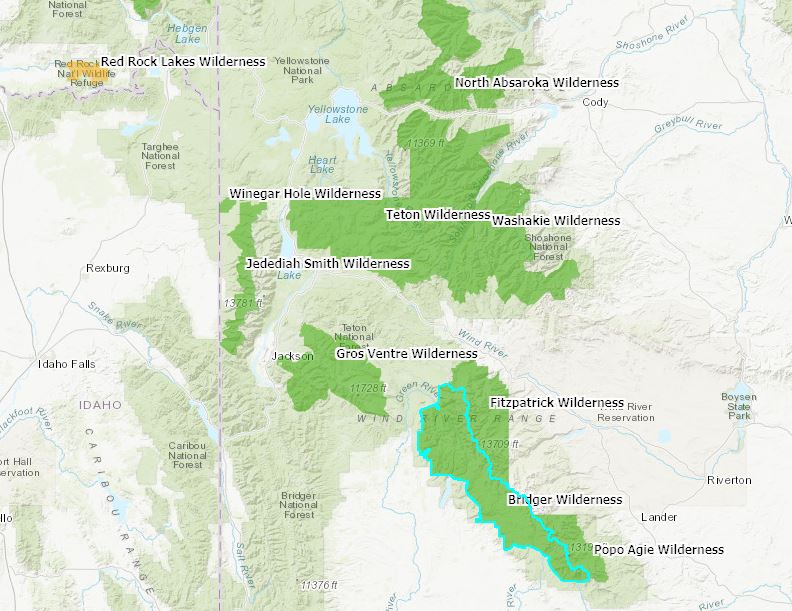 MAP
MAP
bridger_wilderness_recreational_livestock_application
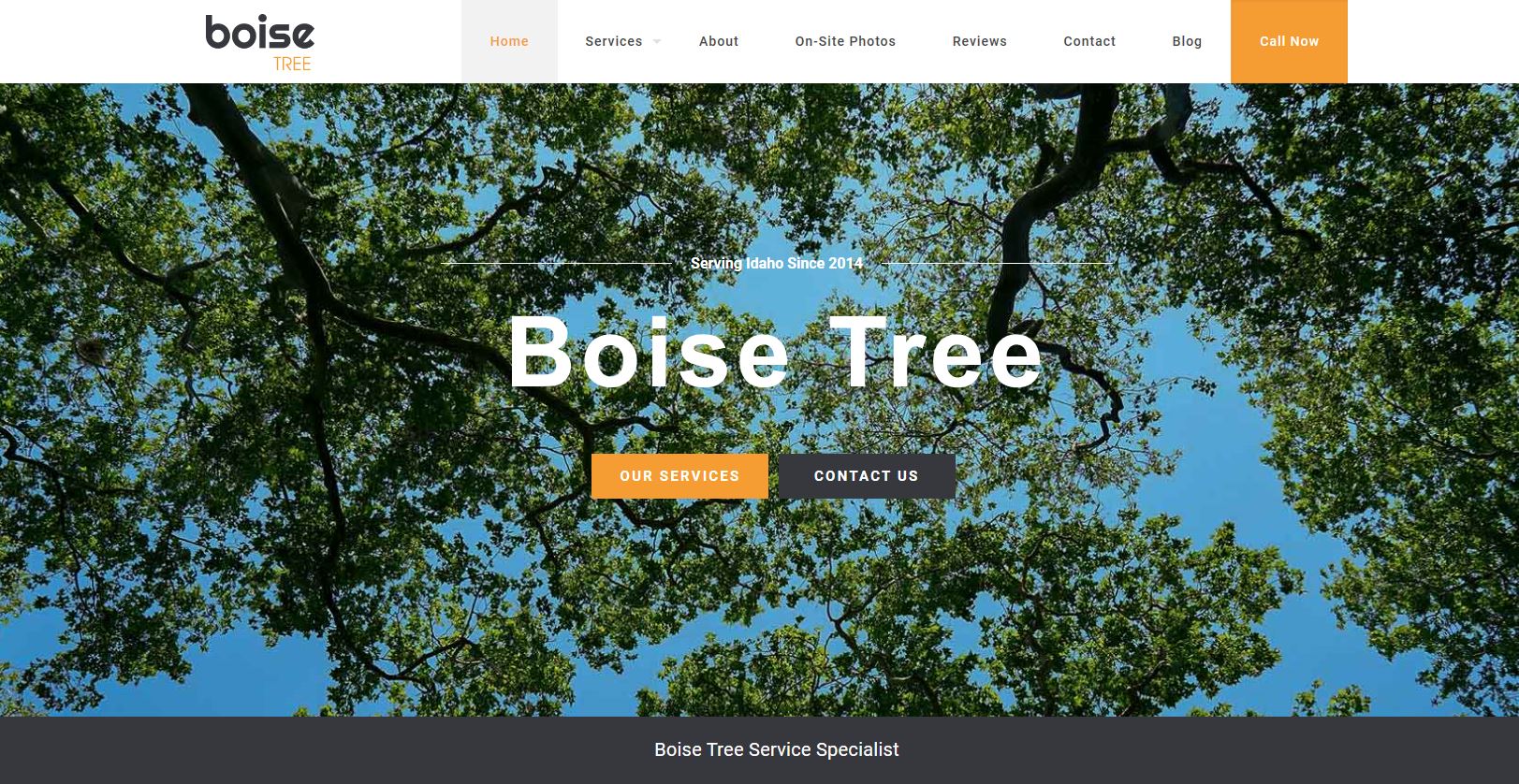
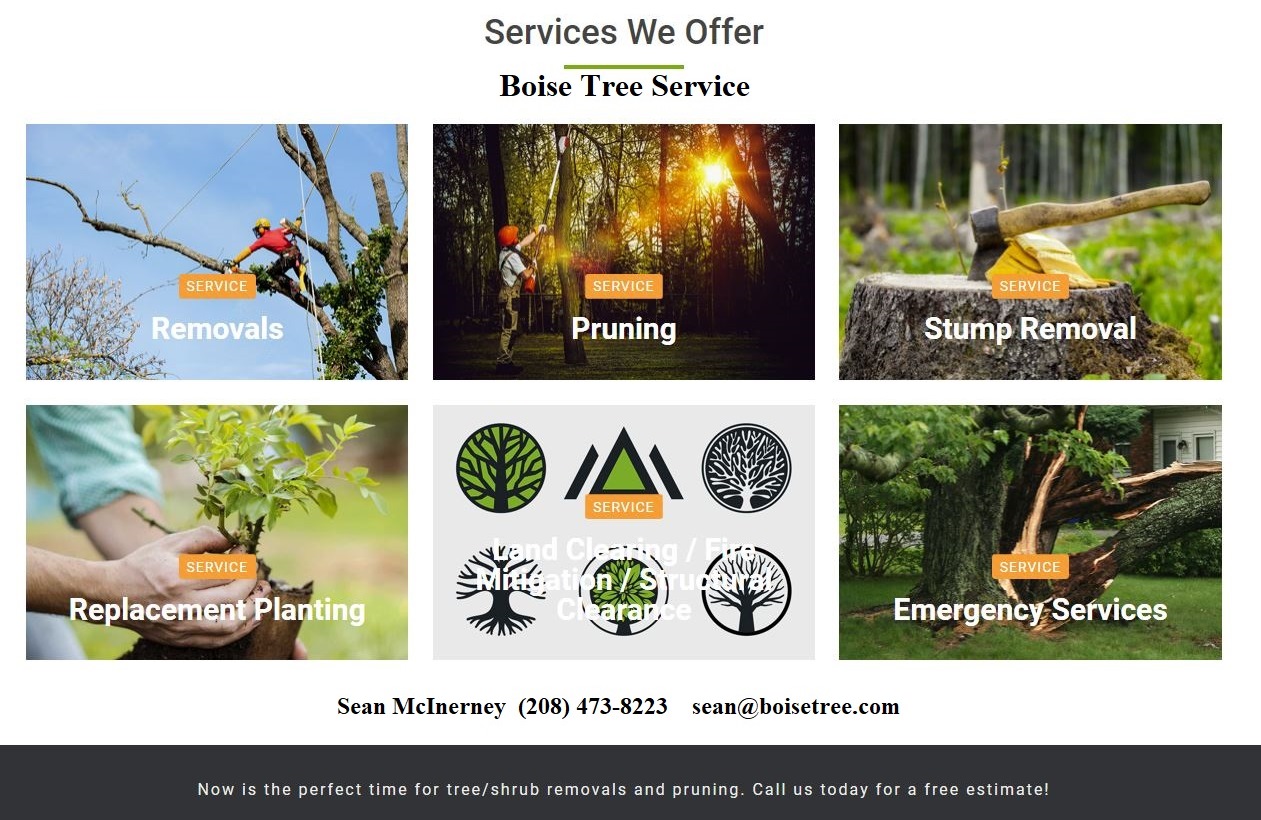 Over the summer a 25 year old cotton wood that I planted when we first bought our place in Sweet was looking very poorly, more dead than alive branches. In the fall after the leaves were gone, I gave it a very close look and made arrangements for an arborist to take a look and give me an estimate to remove it that was the right course of action. Sean McInerney of Boise Tree Service came out in November and agreed that the tree needed to come down before a good wind brought it down. We sent an appointment for after the holidays and on January 6, 2020 his crew arrived to perform the work.
Over the summer a 25 year old cotton wood that I planted when we first bought our place in Sweet was looking very poorly, more dead than alive branches. In the fall after the leaves were gone, I gave it a very close look and made arrangements for an arborist to take a look and give me an estimate to remove it that was the right course of action. Sean McInerney of Boise Tree Service came out in November and agreed that the tree needed to come down before a good wind brought it down. We sent an appointment for after the holidays and on January 6, 2020 his crew arrived to perform the work.
The tree was ringed by other smaller trees that I wanted to keep and would need to come down in pieces in a controlled fashion. I was interest to see if they would bring a cherry picker or climb. 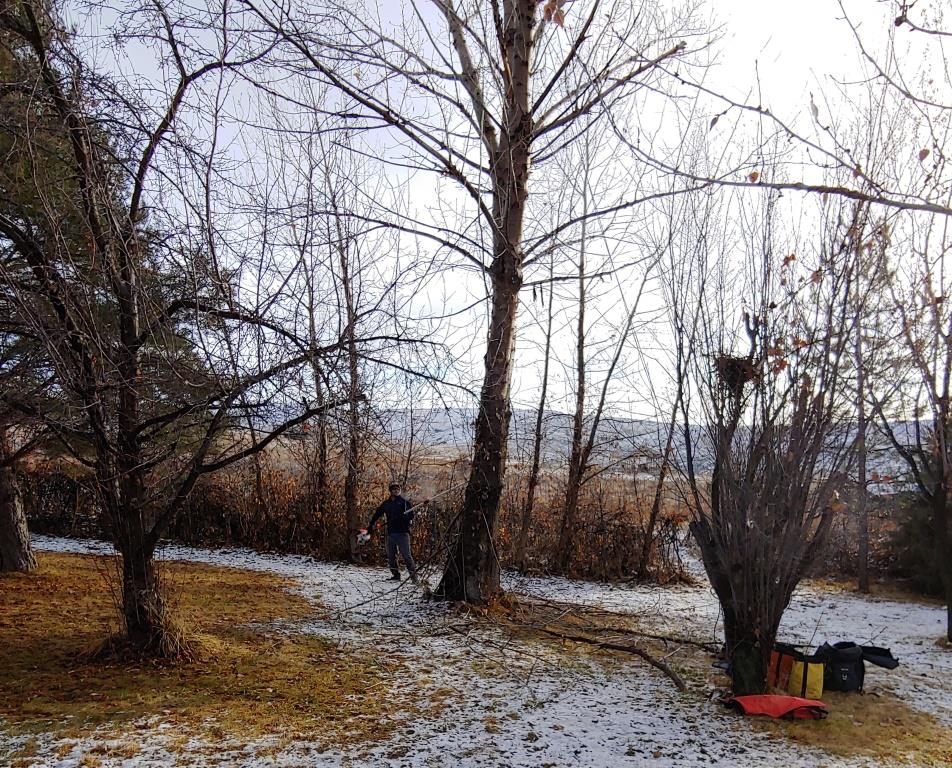
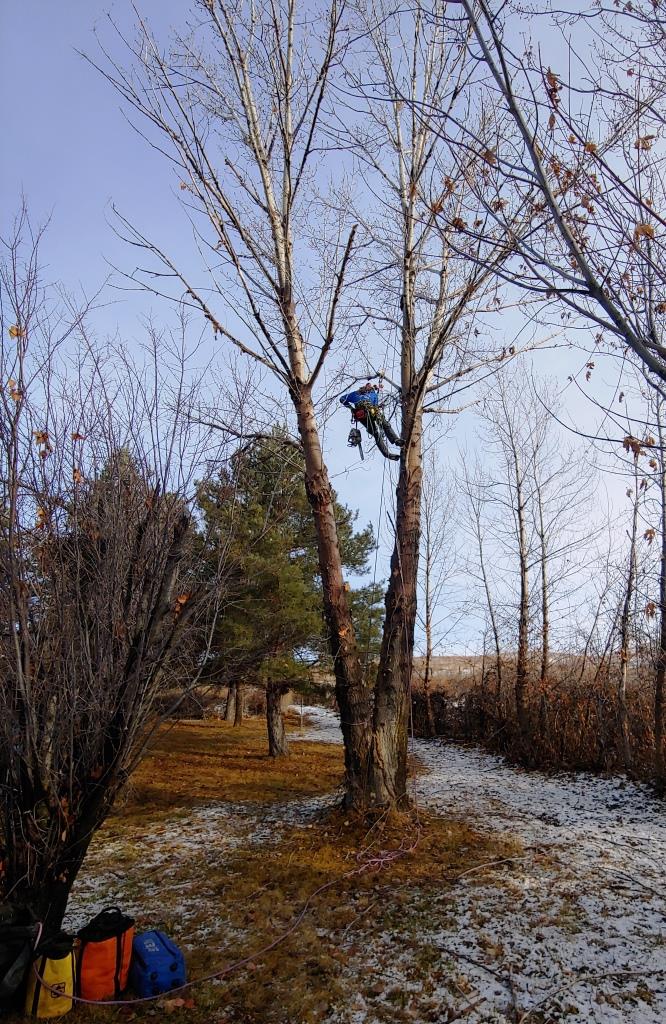
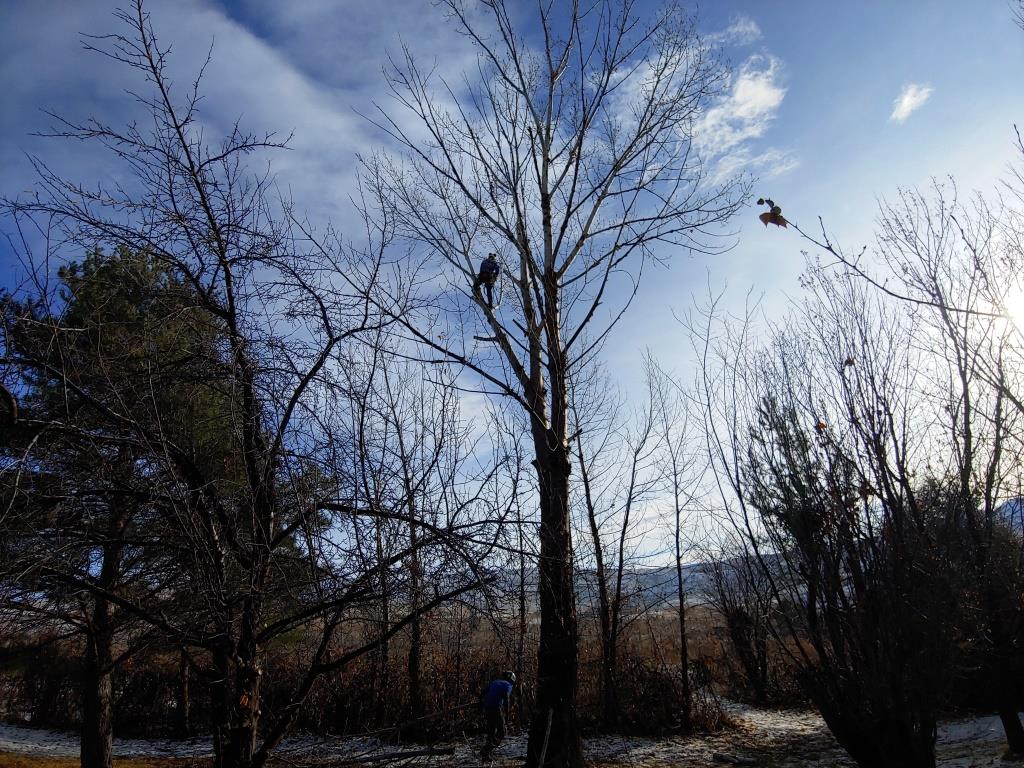
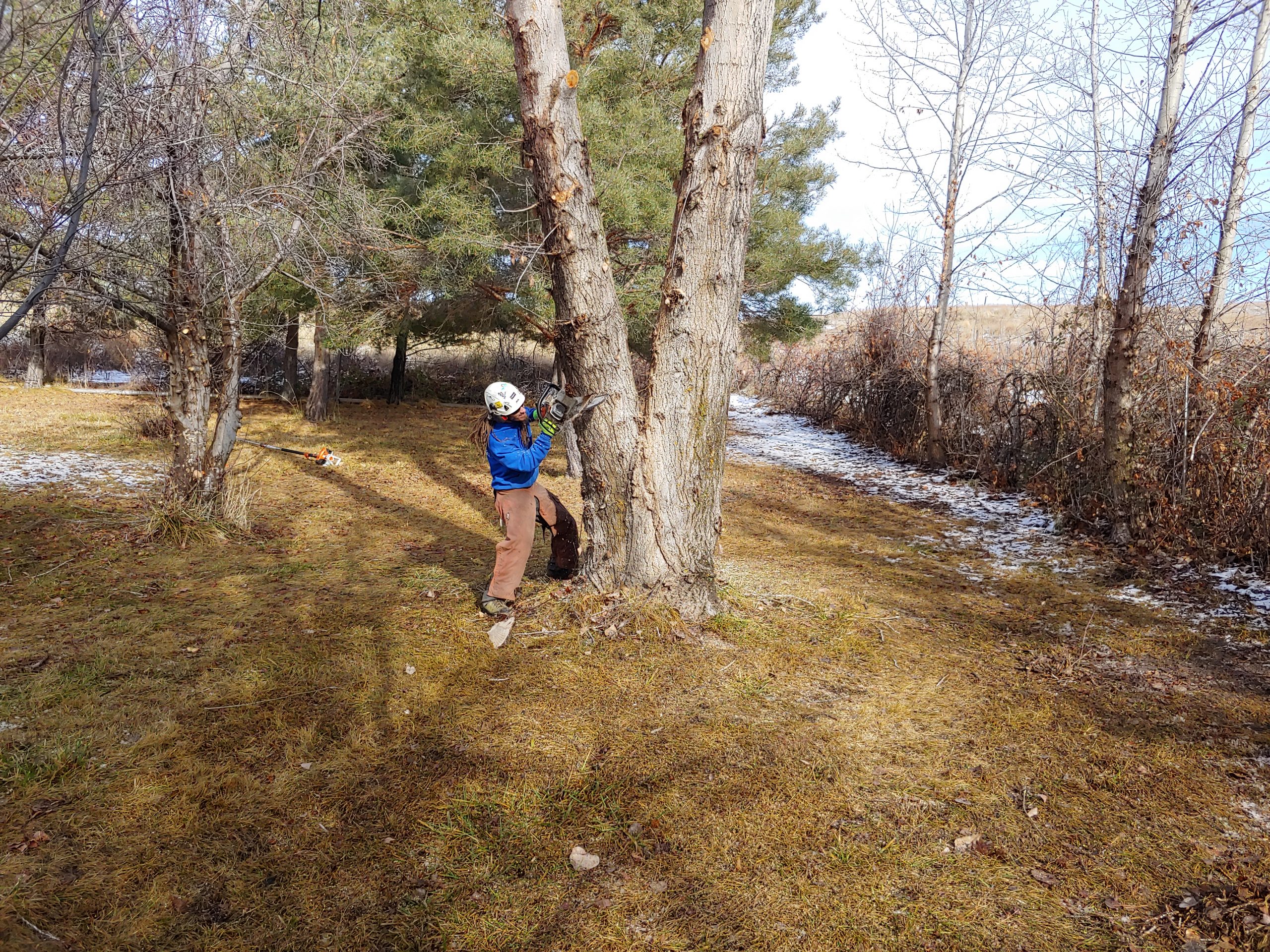
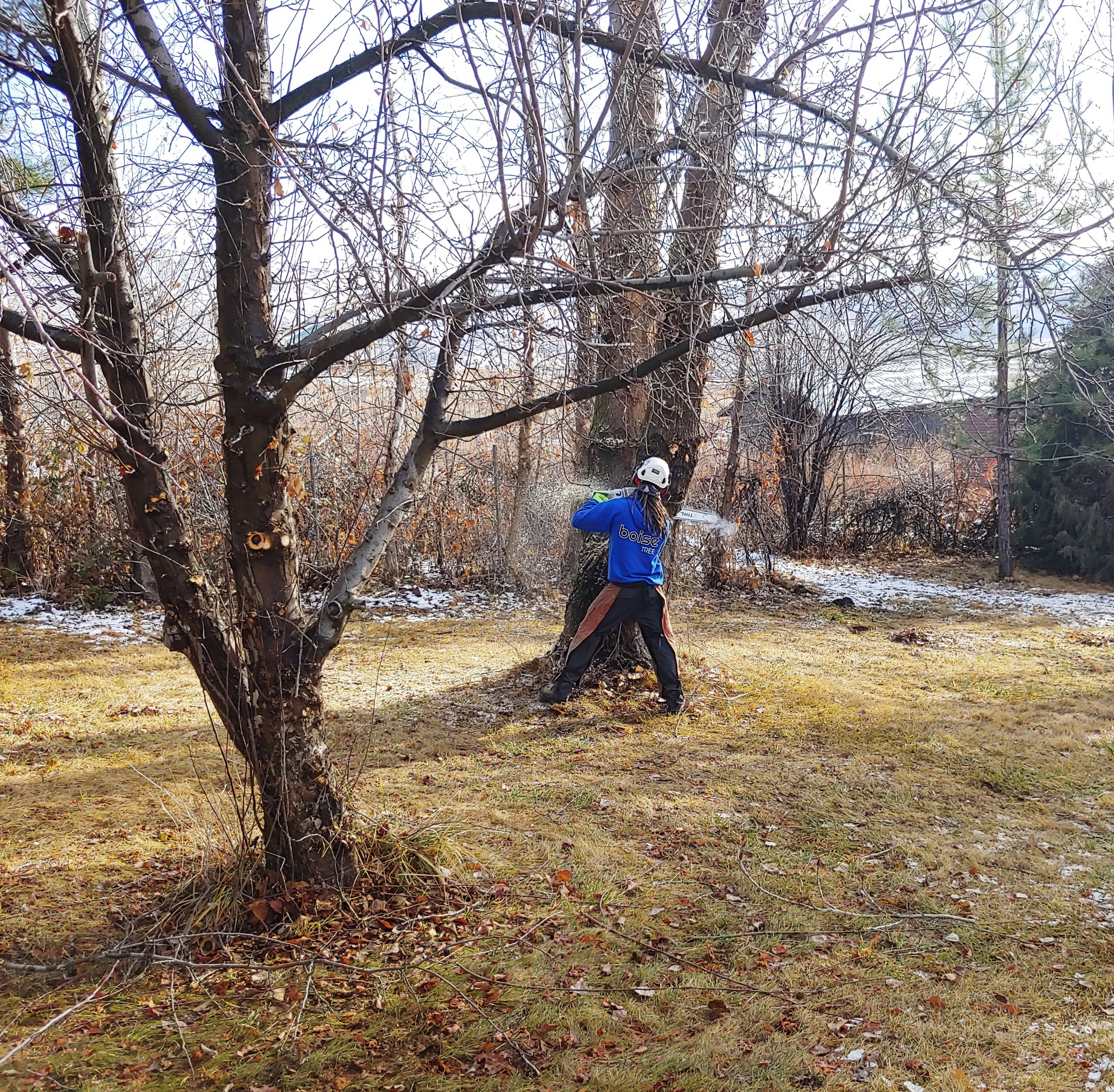
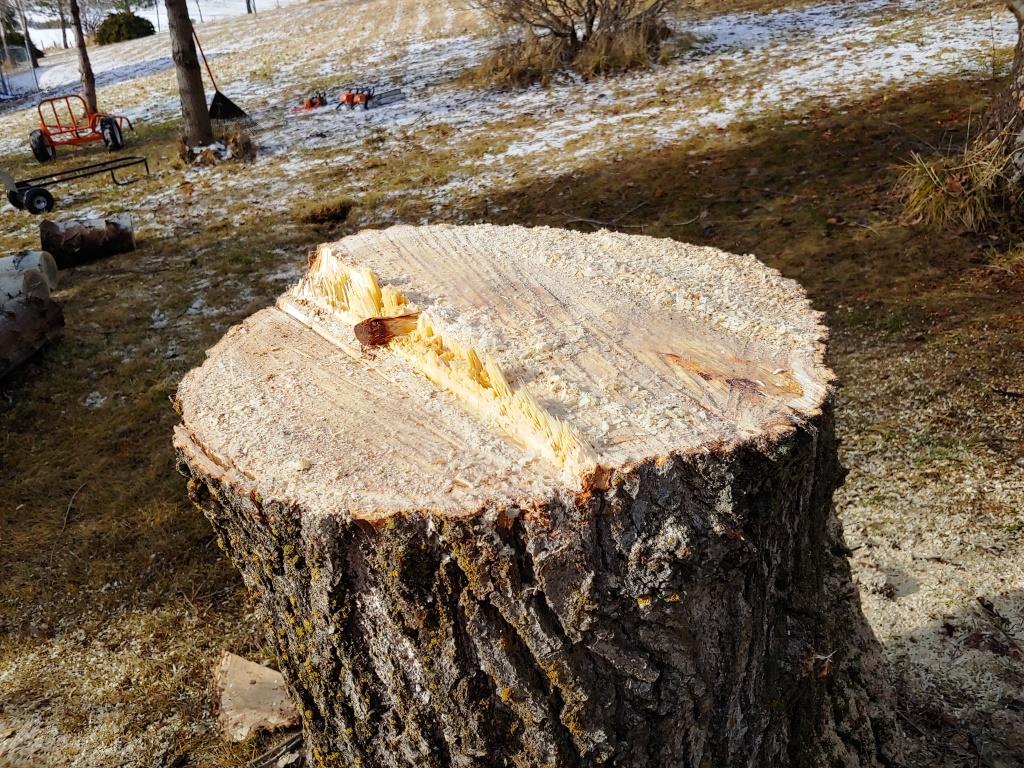
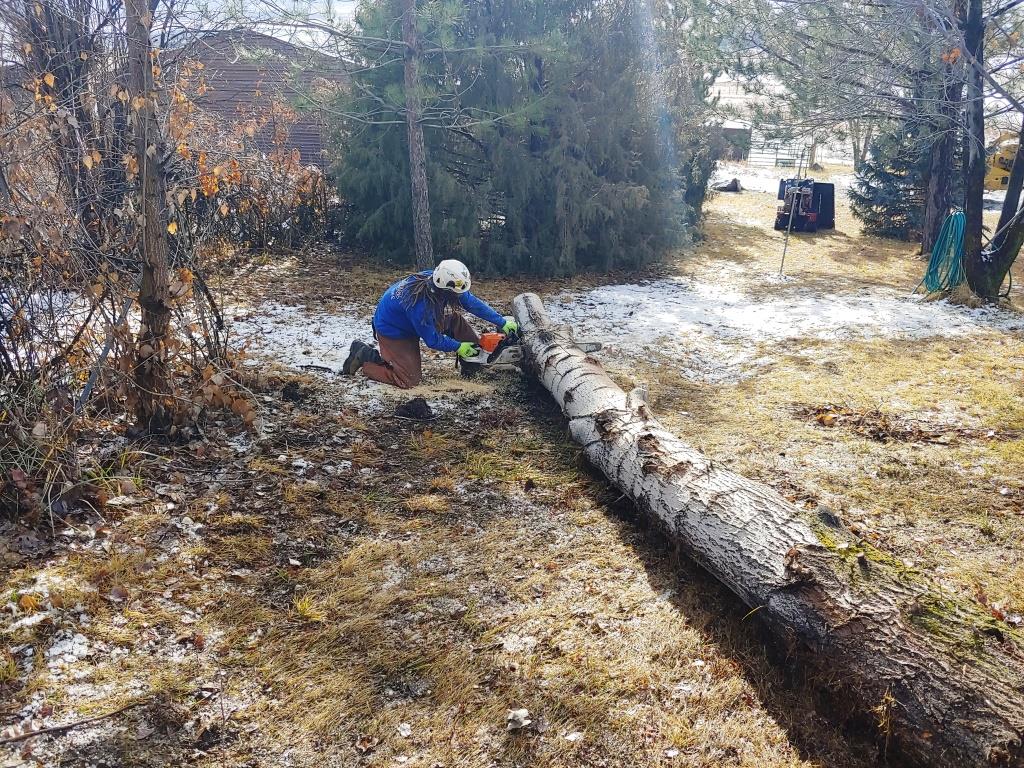
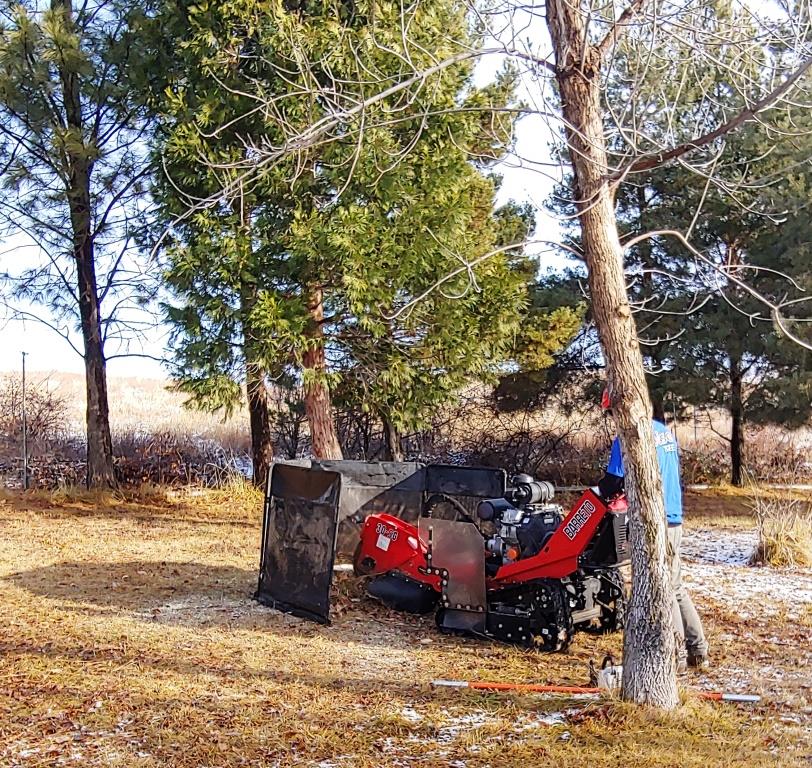
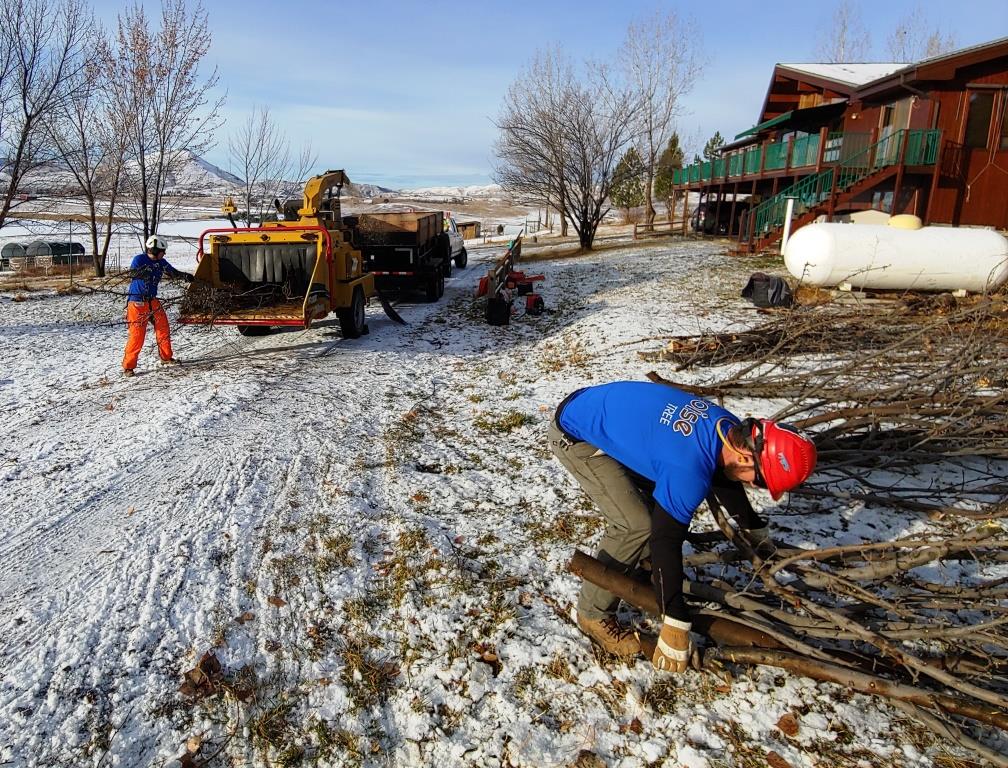 When they were through, the only thing left was some saw dust, the stump was gone, the branches ground up, the larger pieces load in a trailer. I was very impressed with their sawyer skills and professionalism.
When they were through, the only thing left was some saw dust, the stump was gone, the branches ground up, the larger pieces load in a trailer. I was very impressed with their sawyer skills and professionalism.
Happy New Year! Wanted to make sure you were aware the Forest Service’s National Crosscut and Chainsaw Program webpage is live. It should hopefully provide a site for you to get all the FS saw information consolidated such as FS Saw Policy, PPE requirements, complexity charts, and the 5 step cutting process. The new curriculum will be posted here once it becomes finalized. I look forward to a great 2020 season and hope to see you all at some point this year. Thanks and please let me know if you have any questions. Brian Burbridge, Region 4 Saw Program Manager brian.burbridge@usda.gov
Please share widely. If you have comments on the page, please send them to National Saw Program Manager Pete Duncan at pete.duncan@usda.gov
https://www.fs.usda.gov/managing-land/trails/trail-management-tools/national-saw-program
National Saw Program Technical Advisory Group (SPTAG)
The SPTAG is made up of national and regional saw program managers as well as other subject matter experts who provide guidance for consistent implementation of the National Saw Program.
National and regional saw program managers contact information…
Sawyer Training
New crosscut and chainsaw training modules will be available soon. The module-based training focuses on “Developing a Thinking Sawyer” and emphasizes risk management, human factors, and sawyer safety. Forest Service sawyers can still attend approved training courses until the new program is finalized.
Contact your local unit saw program for training opportunities. National and regional training workshop announcements will be added to this page. Check back for updates!
Personal Protective Equipment (PPE)
Wearing the proper PPE is critical when operating a chainsaw or crosscut saw. Follow these guidelines for required PPE when using a saw…
Sawyer Certification Levels
Forest Service employees, volunteers, partners, and cooperators can obtain 4 levels of certification for chainsaw and crosscut saw operation under the new saw policy:
Related Reference Materials
- Five-Step Cutting Process
- Determining Complexity
- Complexity Chart
- Hazard Trees and their Target Zone
- The Crosscut Sawyer (University of Montana Online Training)
- Inspecting and Repairing Chainsaw Chaps
Have a question?
Contact the Forest Service Saw Program at sm.fs.fssawprogram@usda.gov.
January 6, 2020
By Kent May – Trails Supervisor Sawtooth National Recreation Area
For 2021 RTP we are replacing two log boardwalks/puncheon, and removing two others on the Livingston Mill trail (pics attached). The two that are removed, will have the stream crossing hardened with rock to prevent erosion. On top of the infrastructure work, we will be doing 90 miles of heavy maintenance to trails in and accessing the White Clouds Wilderness.
Replace these
Remove these and harden trail
For 2021 ORMV we are building 25’ of puncheon over a perennial stream on Grand Prize motorized single track trail (pic attached). For this grant there will also be a maintenance component of 100 miles of heavy maintenance to motorized trails, paying special attention to the Grand Prize trail to prevent any motorized encroachment into the Boulder Wilderness.
We are looking for support letters for our 2021 IDPR Grants
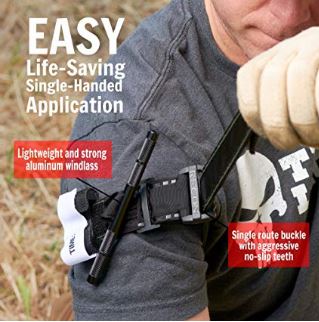 Tourniquet – Life saving equipment – hemorrhaging is the leading cause of preventable death in tactical and non-tactical trauma situations VIDEO
Tourniquet – Life saving equipment – hemorrhaging is the leading cause of preventable death in tactical and non-tactical trauma situations VIDEO
- Life saving equipment] – hemorrhaging is the leading cause of preventable death in tactical and non-tactical trauma situations
- Patent pending finger hole design for better grip in mud, blood
- No-curl tip – for the largest patients the no-curl tip resists pealing when matters most
- Apply a second tourniquet to stop difficult arterial bleeding
- New gen 3 us made kevlar stitching, aluminum windlass, aggressive teeth pinch buckle prevents strap pealing

QuikClot First Aid Advanced Clotting Sponge
- QuikClot stops bleeding 3 times faster than blood on its own
- Tested and proven in years of combat use by the U.S. military
- Pre-hydrated zeolite clotting agent does not contain botanicals or animal and human proteins
- Easily conforms to wounds; simply apply the sponge to the source of the bleeding and apply pressure
- The compact size allows you to add QuikClot to your medical supplies, glove box, or emergency kit
- VIDEO

ZipStitch Laceration Kit – Surgical Quality Wound Closure VIDEO
- WHEN YOU CAN’T STITCH IT, ZIP IT! This product contains the following: 1 ZipStitch device to close minor lacerations up to 1.5”, 1 alcohol wipe to clean the wound area, 1 gauze pad to help control bleeding and 1 bandage to cover and protect the closed wound, supplies for one wound. ZIPSTITCH is only 1.5″ so bring it along for that extra peace of mind in any situation where cuts may occur.
- IT’S EASY TO USE AND EFFECTIVE: The intuitive Zip closure allows you to close minor lacerations in seconds with no pain or puncturing of the skin and is proven to be 8X stronger and leave less scarring than stitches, specially-designed adhesive lasts for up to 7 days



